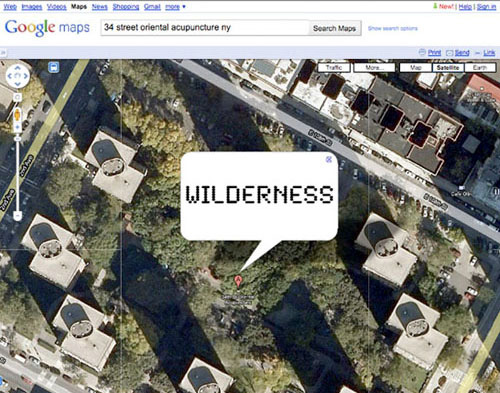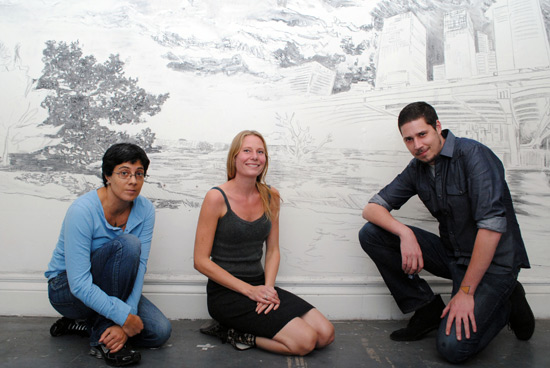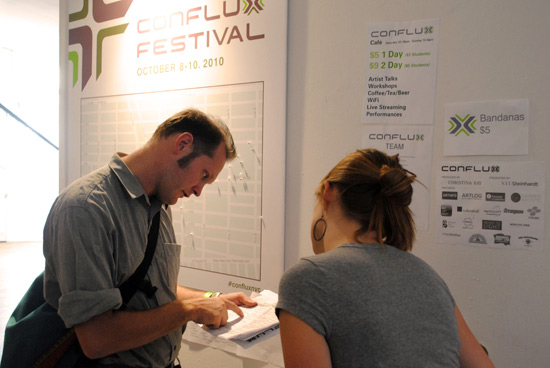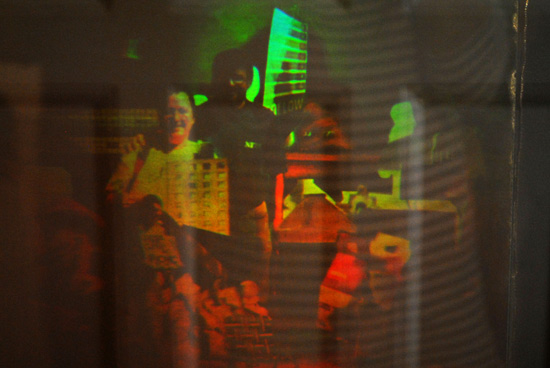Walking into the HQ of the Conflux Festival in the East Village, it’s easy to believe you’re at an arts festival. The white walls display squares of paper adorned with graphic designs and text in inoffensive fonts, and there are attractive and creatively dressed women and men sipping wine and the ubiquitous cheap beer that has become an unfortunate staple of art gatherings nationwide.
Given such visual markers, you conclude: arts festival. Peruse the festival’s program, however, and your conviction might waver. Offerings such as Cline Delgado Kalin’s “What Kind of City Do You Want to Live In?”, which asks participants to build and then rebuild a miniature city, and Sheryl Oring’s “Happy Day,” in which the artist collects “gently used children’s clothing” from donors and then redistributes the items to low income families, destabilize commonly held ideas of art. As Eric Peterson pointed out in Urban Omnibus, Oring’s actions don’t diverge that far from what Goodwill and other charities do day in and day out, while “What Kind of City Do You Want to Live In?” cleaves closely to the design charettes and workshops urban planners are always trying to get neighborhood tenants to join.
But your confusion is, in some ways, precisely what the festival addresses: psychogeography, or what Guy Debord, famed Situationist, described in 1955 as the emotional and behavioral effects geography have on us. For instance, there in the seemingly art-bedecked Conflux HQ, you’re likely to think that you are, in fact, at an arts festival, despite pieces such as Oring’s, which suggest that uh, no, you’re at a fundraiser of sorts.
In other words, take the press you’ve read about the Conflux Festival with a grain of salt. As Christina Ray, the festival’s executive director, explained, some of the festival participants don’t identify themselves as artists, being instead architects, designers, and yes, city planners. That explanation resolves some of the cognitive static emitted by certain projects, allowing you to focus on those that provide clear signals of their artistic merit.
Turn your attention, for example, to Elizabeth Whalley and Marie Ucci’s “East Village Florilegium” and ecoarttech’s “Indeterminate Hikes,” two works in counterpoint. The first has participants document through drawing, photographs, or other means the living matter of the neighborhood; the second provides a downloadable app that users tune into to hear instructions, such as stop for 10 breaths, as they tour the East Village. Ecoarttech hopes such moments will prompt users to question what “wilderness” means in an urban setting, while “East Village Florilegium” underscores the traditional understanding of nature. Both make worthwhile the sometimes chaotic and occasionally dim spots of Conflux, which heads into its second day tomorrow.
(photos: 1 – 2 courtesy ecoarttech, 3 – 6 courtesy Pauline Tran)







 RSS
RSS
